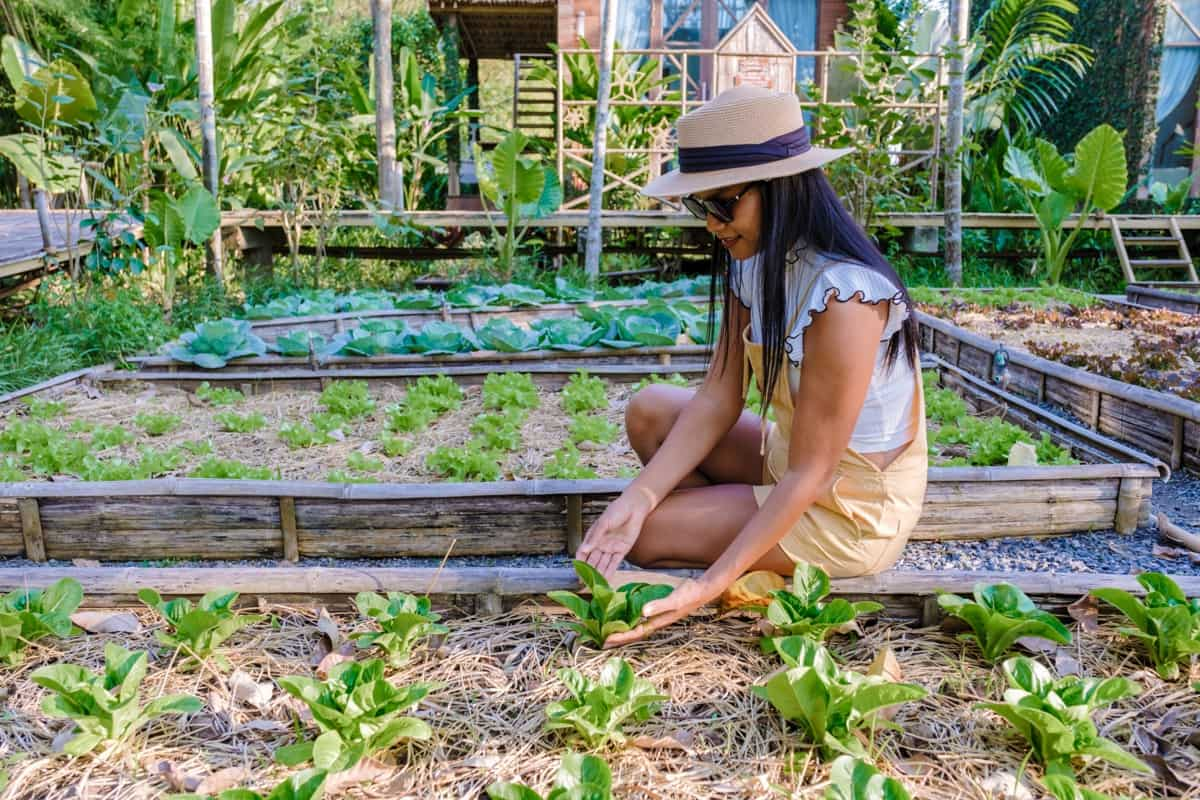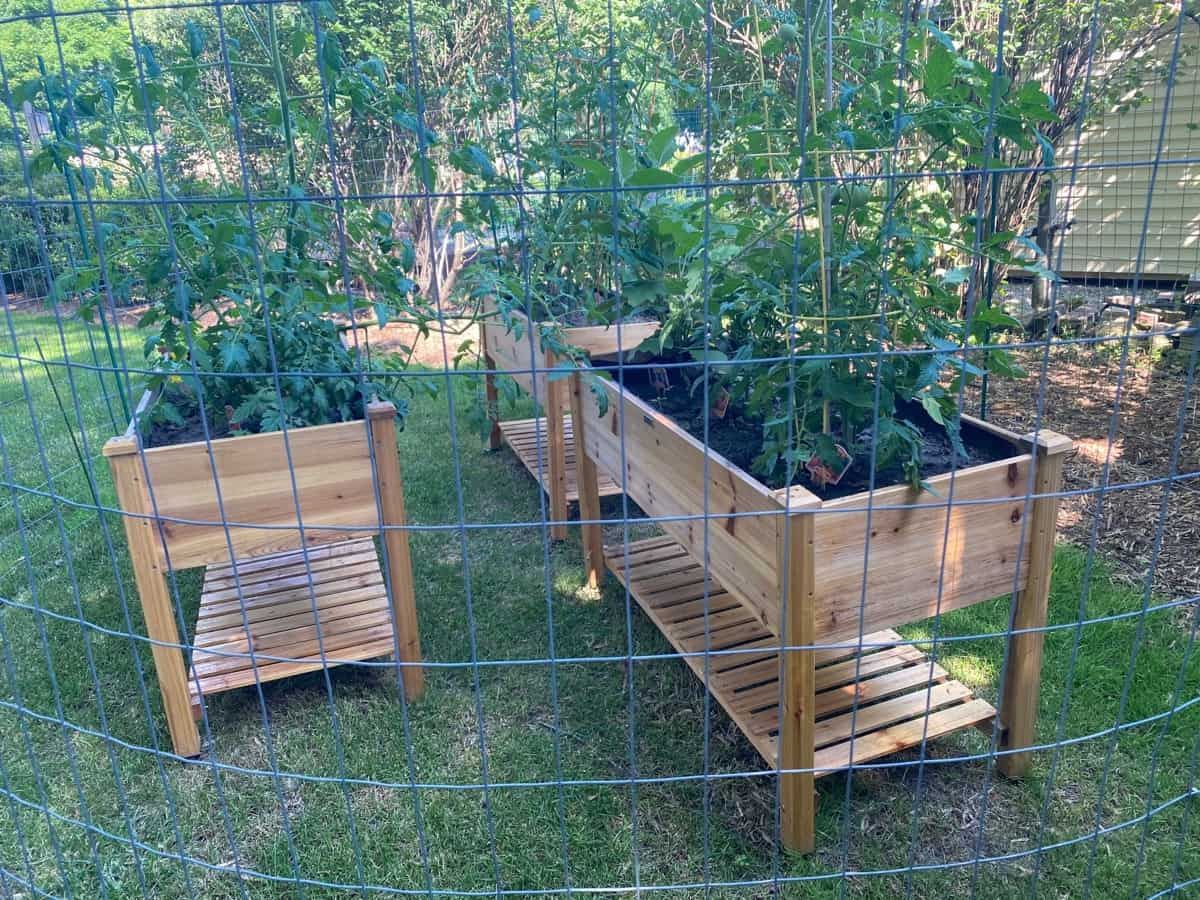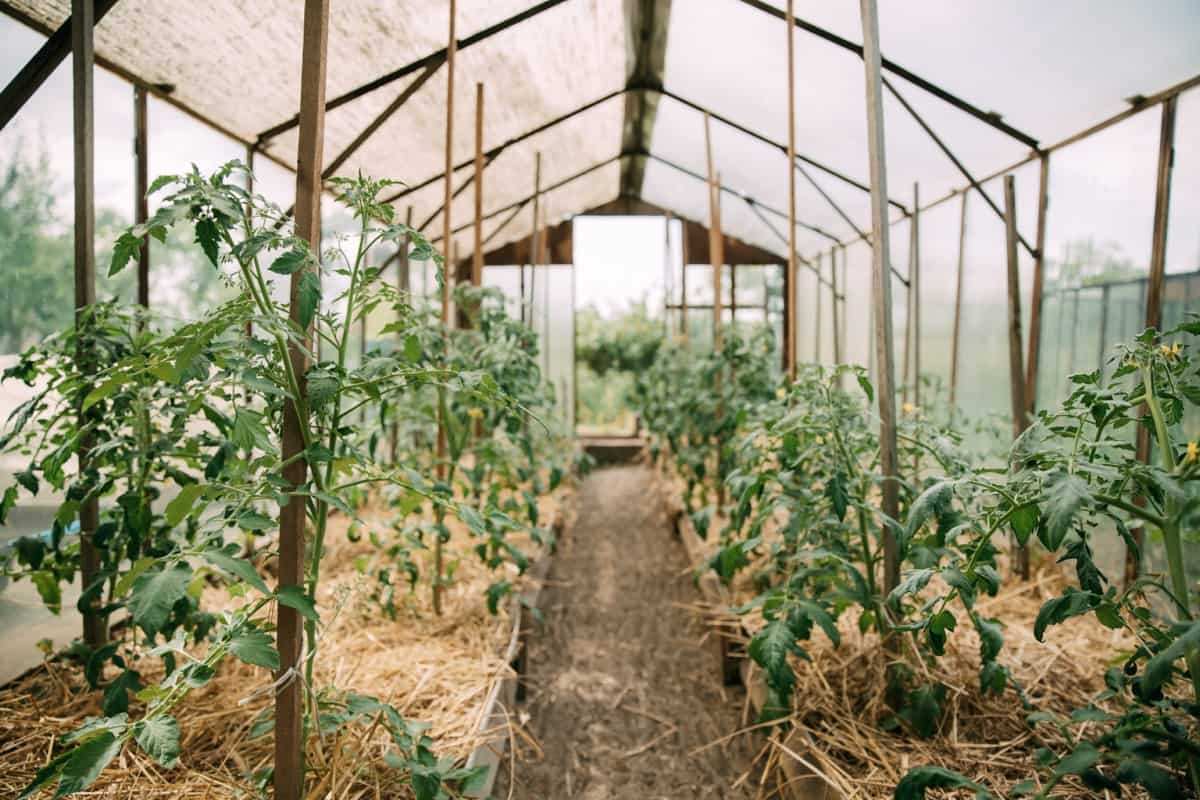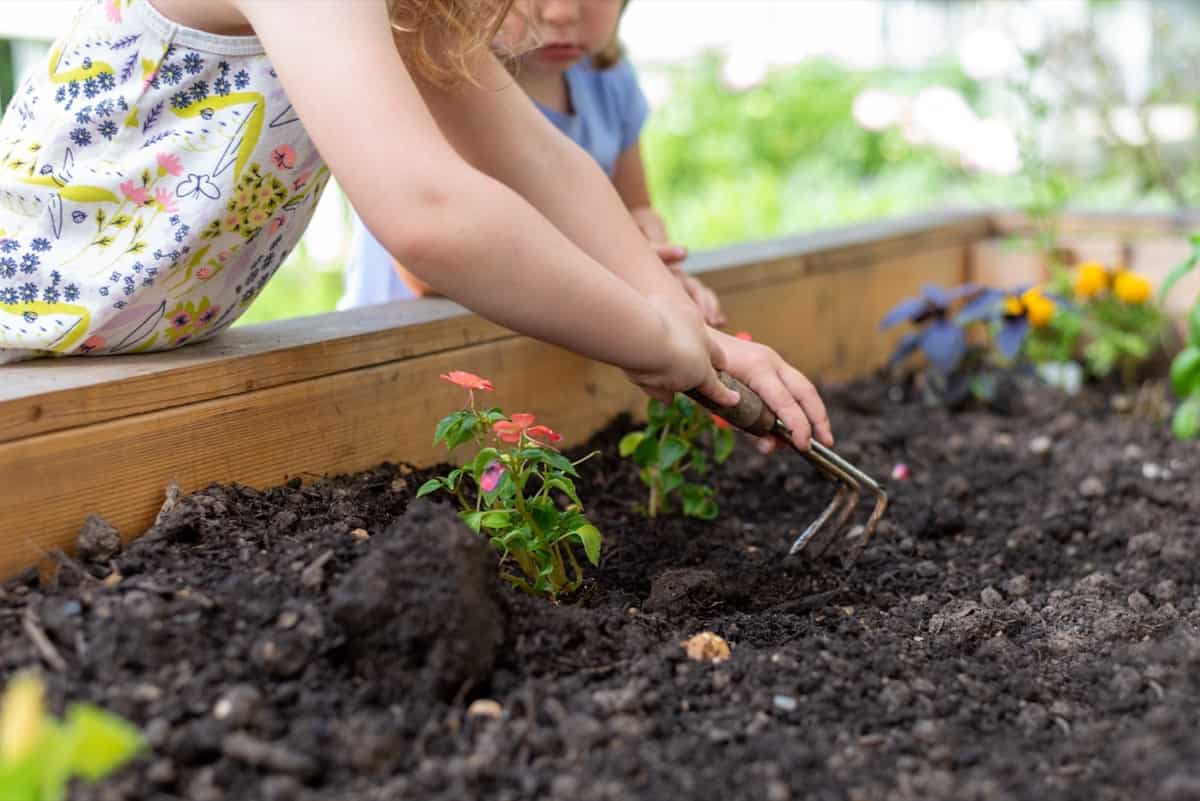Raised garden beds offer numerous benefits for all types of plants, making them a fantastic choice for any gardener. They offer numerous benefits, such as improved soil quality, better drainage, and easier access to planting and harvesting. With various options available in terms of materials and sizes, there are raised garden beds out there that will suit your needs.

Remember to properly care for your raised garden beds by regularly watering and fertilizing your plants. Keep an eye on potential pests or diseases so you can address them early on. You’ll be rewarded with thriving gardens year-round by providing optimal conditions in these elevated planters.
Best Raised Garden Beds for All Plants
Best Raised Garden Beds for Vegetables
When growing vegetables, having the right raised garden bed can make all the difference. One of the best raised garden beds for vegetables is the Greenes Fence Cedar Raised Garden Bed. Made from naturally rot-resistant cedar; this bed provides excellent drainage and airflow for your veggies. Its modular design allows you to expand or customize your garden as needed. If you’re looking for something more compact and space-saving, consider the VegTrug Elevated Planter.
This elevated bed saves space and makes gardening easier on your back and knees. Its V-shaped design helps promote healthy root growth and maximizes planting area. The Smart Pots Big Bag Fabric Raised Bed is for those who want an eco-friendlier option. These fabric beds are made from recycled materials, allowing for excellent root development due to their breathable fabric construction. Whatever raised garden bed you choose for your vegetables, consider factors like durability, ease of assembly, and suitability for different climates.
Top Rated Raised Garden Beds for Herbs
When growing herbs, having the right raised garden bed can make all the difference. These top-rated options will provide a sturdy and efficient solution for cultivating your favorite culinary and medicinal plants. Elevating your herb garden adds a touch of style and makes it easier to tend to your plants without straining your back. Look for models with adjustable heights, allowing you to customize the optimal level for your needs.
In case you missed it: 13 Common Problems with Raised Bed Vegetable Plants: Prevention, Treatment, and Solutions

If space is limited, consider tiered planters that maximize vertical growing space. With multiple levels, these raised beds allow you to grow various herbs in one compact area. Keep your herbs hydrated with self-watering raised beds that feature built-in irrigation systems. This ensures consistent moisture levels and reduces the risk of over or under-watering, giving you healthy and thriving plants. Opt for modular raised garden beds that can be easily expanded or rearranged.
Choose raised beds made from rot-resistant materials like cedar or recycled plastic lumber. These options are durable and environmentally friendly, ensuring long-lasting use while minimizing impact on nature. Proper drainage is crucial for herb gardens since they prefer well-drained soil conditions. Look for raised beds with drainage holes or slatted bottoms that prevent waterlogging and promote healthy root growth.
Raised Garden Beds for Flowers and Plants
Raised garden beds can be a game-changer when growing beautiful flowers and lush plants. These specially designed structures provide the ideal environment for your favorite blooms to flourish. The key to successful flower and plant growth lies in the well-draining soil that raised garden beds offer. Furthermore, the elevated height of these beds reduces the risk of fungal diseases that commonly plague ground-level gardens.
This means healthier plants and more vibrant blooms. Raised garden beds also offer greater control over soil quality. You can customize a blend tailored to your flowers’ needs, ensuring they receive all the nutrients for optimal growth. Additionally, these beds often come with features like trellises or netting options that provide support as your plants grow taller. This keeps them upright and helps maximize space by allowing vines to climb upward.
Durable Raised Garden Beds for All Seasons
When gardening, having a durable raised garden bed that can withstand all seasons is essential. You want something that won’t deteriorate or become damaged when exposed to the elements. One option is a raised garden bed made from rot-resistant materials such as cedar or composite wood. These beds are designed to resist moisture and decay, ensuring they stay strong throughout the year. Additionally, their natural aesthetics add a touch of beauty to any outdoor space.
For even more durability, metal raised garden beds are an excellent choice. Made from materials like galvanized steel or aluminum, these beds can withstand harsh weather conditions without rusting or corroding over time. Choose a raised garden bed with proper drainage features to prevent waterlogging during rainy periods while allowing excess water to drain away easily in dry spells.
Affordable Raised Garden Beds for Small Spaces
Regarding gardening in small spaces, affordability is often a key consideration. One inexpensive raised garden bed idea uses repurposed materials such as old wooden crates or pallets. With some basic DIY skills, you can transform these items into functional planters that fit perfectly in your small space.
In case you missed it: How to Improve Drainage in a Raised Garden Bed

Not only will this save you money, but it also adds a unique touch to your garden. Another cost-effective solution is opting for fabric or fabric-lined raised bed containers. These lightweight containers are affordable and easy to move around if needed. They come in various sizes and shapes, allowing you to customize them according to your available space.
Easy to Assemble Raised Garden Beds for Beginners
One great beginner-friendly option is the Best Choice Products Wooden Raised Garden Bed. Made from firewood, and this bed is lightweight and easy to move around your yard. Its interlocking design allows for quick and hassle-free assembly so you can start your gardening journey quickly. Consider the Yaheetech Wood Raised Garden Bed Kit if you prefer a more customizable option.
This kit includes multiple panels that can be easily assembled into any shape or size you desire. It’s perfect for experimenting with different layouts and configurations as you learn what works best for your plants. For those who want an even simpler solution, fabric-raised garden beds are available. These beds require no tools or assembly – unfold them, fill them with soil, and start planting. They’re lightweight and portable, making them ideal for renters or anyone without permanent outdoor space.
Weather-resistant Raised Garden Beds for Outdoor Use
When gardening, having weather-resistant raised garden beds is essential for outdoor use. These sturdy and durable structures are designed to withstand the elements, ensuring your plants stay protected and thrive all year round. One of the top options for weather-resistant raised garden beds is those made from galvanized steel.
Not only are they rust-proof, but they also provide excellent durability against harsh weather conditions such as heavy rain or snowfall. Another great choice is cedar wood raised garden beds. Cedar naturally resists rotting and insect damage, making it a perfect material for outdoor use. These beds can endure years of exposure to sunlight, rain, and extreme temperatures without losing structural integrity.
Elevated Raised Garden Beds for Seniors or People With Disabilities
Elevated garden beds are best for seniors when coming to the best raised garden bed for seniors. With an elevated raised garden bed, seniors can continue enjoying their love for gardening without putting strain on their joints and back. The convenient height allows them to stand or sit comfortably while tending to their plants, reducing the risk of falls or injuries.
In case you missed it: How to Grow Tabasco Peppers from Seeds: At Home, In Pots, Raised Beds, Terraces, and Backyard

For people with disabilities, these elevated beds provide an opportunity to engage in gardening activities independently. Whether you use a wheelchair or have limited mobility, having the garden bed at a reachable level means you can still enjoy the joys of planting and harvesting your vegetables and herbs. Some models even have adjustable heights to customize them according to your specific requirements.
Portable Raised Garden Beds for Renters or Frequent Movers
One of the best things about portable raised garden beds is their lightweight construction. Made from fabric or lightweight plastics, they can be effortlessly moved around without breaking your back. Whether relocating to a new apartment or simply wanting to rearrange your outdoor space, these beds make it easy. Not only are portable raised garden beds convenient, but they also offer flexibility in size and shape.
You can choose from various dimensions that fit perfectly into any available space –a small balcony or a compact patio. Plus, some models even come with adjustable height options, ensuring that people of all ages and abilities can comfortably tend to their plants. Another advantage is that these portable gardens often feature built-in drainage systems. This means you won’t have to worry about excess water pooling inside the bed or damaging your floor when using them indoors.
The smart design allows for proper water flow while keeping plants healthy and happy. Many portable raised garden bed kits include weed barriers and pest protection covers. This makes maintenance easier by preventing unwanted intruders from ruining your hard work. With these added benefits, renters and frequent movers can enjoy hassle-free gardening without worrying too much about potential issues.
Raised Garden Beds With Built-in Irrigation Systems
Raised garden beds with built-in irrigation systems are a game-changer for gardeners of all levels. These innovative beds take the hassle out of watering your plants, ensuring they receive the perfect amount of moisture at all times. With a built-in irrigation system, you no longer have to worry about overwatering or under-watering your plants. The system delivers water directly to the roots, promoting healthy growth and minimizing water waste.
These raised garden beds are available in various sizes and materials, allowing you to choose the perfect option for your space and aesthetic preferences. Some even have adjustable watering settings, so you can easily customize the water delivered based on your specific plant’s needs. Not only do these beds save time and effort, but they also help conserve water. With a controlled irrigation system, you can minimize runoff and ensure every drop counts. This eco-friendly approach is not only beneficial for your plants but also for the environment.
Stackable Raised Garden Beds for Vertical Gardening
Stackable raised garden beds are a game-changer for vertical gardening enthusiasts. These innovative beds allow you to maximize your space and create stunning displays of plants and flowers. By stacking the beds on each other, you can create a beautiful multi-level garden that adds depth and visual interest to your outdoor space. One of the great advantages of stackable raised garden beds is their versatility. You can easily customize the height and configuration of your garden by adding or removing layers as needed.
This flexibility allows you to adapt to different plant sizes and growth stages, making accommodating small seedlings and larger plants easy. Another benefit of stackable raised garden beds is their portability. Since they comprise individual layers, they can be easily disassembled and moved around if needed. This is especially useful for renters or frequent movers who may need to relocate their gardens occasionally.
In case you missed it: Top 10 Best Vegetables to Grow in Raised Beds: Ultimate Guide for Planting to Harvest

In addition, these beds provide excellent drainage for your plants, preventing waterlogged soil that can lead to root rot or other issues. The vertical design also promotes better air circulation, reducing the risk of disease in your plants. When choosing stackable raised garden beds, look for ones made from durable materials such as weather-resistant plastic or sturdy metal alloys. Ensure the interlocking mechanisms between layers are secure and stable so your garden remains steady even when stacked high.
Cedar Raised Garden Beds for Natural Pest Control
Cedar raised garden beds are not only aesthetically pleasing, but they also offer a natural solution for pest control. The scent of cedar acts as a deterrent to many common garden pests, keeping them away from your precious plants. One benefit of using cedar for your raised garden bed is its resistance to insects and rot. Unlike other types of wood that may attract pests or deteriorate over time, cedar stands strong against these challenges. This means less worry about termites or decay affecting the longevity of your garden bed.
In addition to repelling pests, cedar has natural antimicrobial properties. With a cedar-raised garden bed, you can ensure a healthier environment for your plants, promoting their growth and overall well-being. Furthermore, cedar is an eco-friendly choice for gardening enthusiasts. It is a sustainable material that requires minimal maintenance and does not contribute to deforestation. You consciously choose environmentally friendly gardening practices by using cedar raised garden beds.
Metal Raised Garden Beds for a Modern Look
If you want to add a touch of contemporary style to your garden, metal raised garden beds are the way to go. These sleek and modern structures serve as functional planting areas and double up as eye-catching design elements. One of the major advantages of metal raised garden beds is their durability.
Made from materials like galvanized steel or aluminum, they withstand harsh weather conditions and resist rusting or rotting over time. This means your garden bed will maintain its modern aesthetic for years. Another benefit of using metal raised garden beds is their versatility. Whether you have a small balcony space or a sprawling backyard, there’s always a metal raised bed option that fits perfectly into your landscape.
Metal absorbs heat well, which means the soil in your raised bed will warm up more quickly in springtime and stay warmer during colder months – perfect for extending the growing season. Furthermore, metal raised garden beds provide excellent drainage due to their open-bottom design. Excess water can easily drain without drowning plant roots or causing waterlogging issues commonly associated with traditional ground-level gardens.
In case you missed it: 9 Common Raised Bed Gardening Mistakes: Every Gardener Must Avoid Them

Recycled Plastic Raised Garden Beds for Eco-friendly Gardening
When it comes to eco-friendly gardening, choosing the right materials can make a big difference. That’s where recycled plastic raised garden beds come in. These innovative beds are not only practical and durable but also have a positive impact on the environment. By repurposing plastic materials that would otherwise end up in landfills or oceans, you’re actively contributing to a cleaner planet.
In addition to being environmentally friendly, these raised garden beds offer several other advantages. They are lightweight yet sturdy, making them easy to move around your yard if needed. The material is also resistant to rotting, warping, or fading, ensuring that your garden bed lasts for years without frequent replacements. Moreover, recycled plastic raised garden beds require minimal maintenance compared to traditional wood.
Conclusion
Many options are available when choosing the best raised garden bed plans for all plants, all seasons, small spaces, and outdoor use. These versatile gardening solutions provide a practical way to grow your favorite plants and offer numerous benefits, such as improved drainage, better soil quality, and easier access. Whether you’re an experienced gardener looking to expand your planting options or a beginner starting on this rewarding journey, investing in a high-quality raised garden bed will undoubtedly enhance your green oasis’s aesthetics and productivity.
- How to Grow Hibiscus from Flower
- Plantation Ideas for Home Decoration: A Beginners Guide
- Flower Garden Designs and Layouts for Beginners
- Planting and Spacing Techniques in Papaya: A Beginner’s Guide
- Growing Gold: Essential Techniques for Planting Pineapples
- How to Make Kalanchoe Plant Bushy: Home Remedies and Solutions
- 11 Reasons Why Your Gardenia is Not Blooming: Home Remedies and Solutions
- Eco Elegance: The Guide to Designing a Drought-Tolerant Landscape
- Gardening on a Slope: Strategies for Hillside Landscaping
- Nourish and Flourish: Top Organic Mulches for Thriving House Plants
- Everything You Want to Know about Indian Mogra Flower: Discover Uses and Growing
- Green Thumb Success: Expert Tips for Cultivating Greenhouse Pumpkins All Year Round
- Maximize Growth & Flavor: The Ultimate Guide to Companion Planting in Herb Gardens
- How to Control Rhododendron Problems Naturally: Home Remedies and Organic Ways to Fix Them
- Natural Magic: The Remarkable Benefits of Cinnamon for Plants
- Best Steps to Revive Dying Tulip with Natural and Organic Treatment
- 10 Reasons Why Your Angel Trumpet is Not Blooming: Remedies and Treatment
- How to Fix Periwinkle Leaf and Flower-Related Problems: Natural Remedies and Solutions
- How to Fix Zinnias Leaf and Flower Problems: Discover Natural and Home Remedies
- Organic Steps to Induce Lemon Tree Flowers: A Comprehensive Guide
- Bloom Booster: Crafting the Perfect Homemade Bougainvillea Fertilizer
- Optimizing Growth: A Guide to Applying NPK Fertilizer for Potted Plants
- 10 Best Homemade Fertilizers for Rubber Plant: DIY Recipes and Application Method
- How to Boost Female Pumpkin Flowers: Effective Steps for More Flowers and High Yields
- Transform Your Indoor Garden: Top Benefits of Pink Salt for Houseplants
- 10 Best Homemade Fertilizers for Peacock Plants (Calathea): Easy DIY Guide
- Unlock Blooms: 9 Reasons Why Your Potted Chrysanthemum is Not Blooming
- 8 Reasons Why Your Potted Hibiscus is Not Blooming: Fix it with Simple Solutions
- Unlock Blooms: 9 Key Reasons Your Potted Frangipani Won’t Flower
- 10 Reasons Why Is My Ice Plant Not Blooming: Remedies and Treatment
- 10 Reasons Why My Potted Hydrangea Not Blooming: Treatment and Remedies
- 10 Reasons Why is My Wisteria Not Blooming: Remedies and Treatment
- 10 Reasons Why is My Goldfish Plant Not Blooming: Remedies and Treatment
- Maximize Your Space: Ultimate Guide to Balcony Gardening with Grow Bags
- 10 Reasons Why Your Iris is Not Blooming: Remedies and Treatment
- 10 Reasons Why Your Anthurium Plant is Not Blooming: Treatment and Remedies